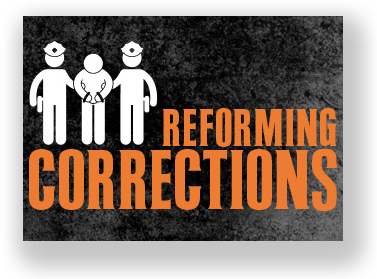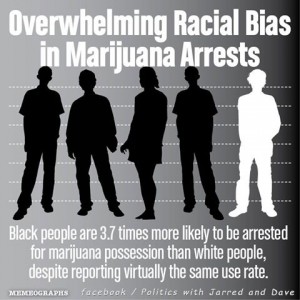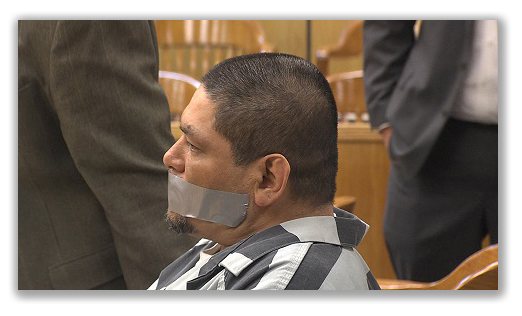We post news and comment on federal criminal justice issues, focused primarily on trial and post-conviction matters, legislative initiatives, and sentencing issues.
CLEMENCY: SOMETHING’S HAPPENIN’ HERE
We’re down to 11 more days of President Obama to finish whatever he has planned on commutation of sentences, and we’re hearing a couple of things to suggest that something big is about to happen.
 A few weeks ago, we heard that the Obama Administration had asked the Dept. of Justice for an opinion as to whether Obama could commute sentences without naming individual names, more of a blanket commutation for those who met certain criteria on their sentences, prison conduct and the like. The rumor was second-hand, but we did confirm that the source was likely in a position to be aware of the information he was quoted as passing along.
A few weeks ago, we heard that the Obama Administration had asked the Dept. of Justice for an opinion as to whether Obama could commute sentences without naming individual names, more of a blanket commutation for those who met certain criteria on their sentences, prison conduct and the like. The rumor was second-hand, but we did confirm that the source was likely in a position to be aware of the information he was quoted as passing along.
We don’t know what advice the DOJ provided on the subject (or even if it did), but the question tantalizingly suggests White House interest in a large-scale across-the-board commutation.
Then last Thursday, we learned from a Clemency Project 2014 lawyer that one of the cases we had been working on with her – a guy who had been rejected for clemency by the Project last summer – had been reconsidered. The Project needed a formal application worked up and filed with the Pardon Attorney promptly. We made the Friday midnight deadline, and we were interested at the sudden flurry of interest and demand for an immediate filing.
We think something’s up.
The media still include the predictable skeptics – including the incoming Attorney General – criticizing the Obama clemency push. Jeffrey Sessions, a former U.S. attorney whom Trump has tapped to be the next AG, complains that “so-called ‘low-level, non-violent’ offenders” do not exist in the federal prison system. Other complain that with a recidivism rate of 75%, three out of four people getting commutations will commit new crimes.
Another critic argued that with the commutations, “Obama has effectively undermined the justice systems of the states and… puts Americans’ lives and property at risk.” (This, of course, is nonsense: Obama cannot pardon state inmates, only federal ones).
 But beyond the naysayers’ cants, report are increasingly speculating about clemencies to come. In a piece about commuting the sentencing of Obama’s old friend and Illinois governor Rod Blagojevich, Obama himself suggested that he planned to do more: “I study these cases on an individual basis. As you know, I have exercised my commutation powers very aggressively to make sure that we are not over sentencing people, particularly low-level drug crimes. Some of these higher-profiler cases, we’ll see what gets to my desk.”
But beyond the naysayers’ cants, report are increasingly speculating about clemencies to come. In a piece about commuting the sentencing of Obama’s old friend and Illinois governor Rod Blagojevich, Obama himself suggested that he planned to do more: “I study these cases on an individual basis. As you know, I have exercised my commutation powers very aggressively to make sure that we are not over sentencing people, particularly low-level drug crimes. Some of these higher-profiler cases, we’ll see what gets to my desk.”
P.S. Ruckman, a political science professor at Northern Illinois University and author of the PardonPower blog – which tracks clemency decisions by presidents and state governors – said he expects “commutations to a few hundred more drug offenders, and a handful of pardons,” mostly in drug cases, before Obama leaves office.” Douglas Berman, an Ohio State University law professor and sentencing expert, speculated that because Obama’s “shown a commitment to reduce sentences that he thinks are unjust or excessive, maybe his last few batches will include some high-profile folks.”

Margaret Colgate Love, the Pardon Attorney under President George W. Bush, told Slate magazine that the Obama administration has “already had perhaps the most prolific final year of any president. But that’s only when measured against his fairly barren first seven years. His administration has pledged to act on every one of the thousands of commutation applications filed pursuant to the 2014 initiative, which means that there will either be thousands of grants or thousands of denials in the final weeks. Either way, he will be subject to criticism—and the pardon power itself may be the main casualty.”
Slate, The George W. Bush Advice Obama Should Have Taken (Jan. 5, 2017)
Chicago Sun-Times, Patti Blagojevich on Obama commutation hope: ‘He didn’t say no’ (Jan. 6, 2017)
The Lens, Obama commutes sentences of hundreds of cocaine dealers who targeted kids (Jan. 4, 2017)
The Hill, Last gasps of Obama’s imperial presidency (Jan. 5, 2017)
San Francisco Chronicle, Prominent prisoners’ supporters pin pardon hopes on Obama (Jan. 7, 2017)
–Thomas L. Root









 If the right to be free of restraint is a fundamental one, that doesn’t mean that Peter Pervert can’t be civilly committed. Rather, it just means that the process by which he is locked up, treated and continually detained would be subject to strict scrutiny.
If the right to be free of restraint is a fundamental one, that doesn’t mean that Peter Pervert can’t be civilly committed. Rather, it just means that the process by which he is locked up, treated and continually detained would be subject to strict scrutiny.






 Veronica on “voice” lessons, sessions that included a sexual component. Finally,
Veronica on “voice” lessons, sessions that included a sexual component. Finally,












 The 9th concluded that “because the substitution would not have affected the court’s calendar, Yepiz was entitled to discharge his lawyer for any reason or no reason.” For that reason, the case was reversed.
The 9th concluded that “because the substitution would not have affected the court’s calendar, Yepiz was entitled to discharge his lawyer for any reason or no reason.” For that reason, the case was reversed.


